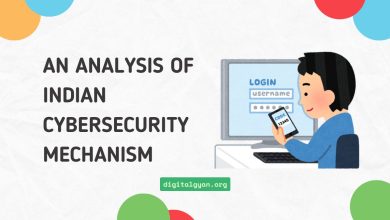The Role of Encryption and Decryption in Data Security
With growing cyber attacks, companies and users need to keep sensitive data from hackers, data thefts, and unauthenticated users. That’s where encryption and decryption become essential. Encryption converts readable information into unreadable data, allowing only legitimate users to view it, while decryption turns it into its original readable form when necessary. These processes are the backbone of secure communication, online transactions, and data protection across industries.
In this blog, we’ll explore role of encryption and decryption techniques in data security and why they are essential for modern cybersecurity.
Understanding Encryption
Encryption is the conversion of plain readable information into unintelligible ciphertext using cryptographic techniques and a personal encryption key such that the information becomes unintelligible without holding its decryption key matching decryption keys that allow it to be deciphered by authorised users. Encryption’s main aim is to ensure that unauthorised individuals are not able to access sensitive information.
Encryption algorithms can broadly be classified into two categories: symmetric and asymmetric encryption. Symmetric encryption utilizes a single key for both the encryption and decryption operations, which is ideal for bulk data transfers. In contrast, asymmetric encryption utilizes two keys–a public key for encryption and a private key for decryption to provide more security but higher computational overhead expenses.
Also Read: 10 Best Practices for An Efficient Software Application Security
Encryption Is an Essential Component of Data Security
Encryption plays an essential part in data security by offering three essential features – confidentiality, integrity and authenticity – which help protect from breaches.
Confidentiality: Encryption ensures that only individuals authorized with access and decryption keys can decipher encrypted information, reducing risks related to unintended access and data breaches for organizations by protecting sensitive information like financial records, personal details, or trade secrets from unwarranted access or breaches.
Integrity: Encryption also aids the data’s integrity by employing digital signatures to verify its transmission or storage. Any change or alteration to encrypted information would result in invalid signatures alerting its recipients of potential attempts at alteration or manipulation of encrypted material.
Authenticity: Encryption provides digital communications with authenticity by employing digital certificates and public key infrastructure (PKI), so the recipient is able to verify who sent them – protecting against phishing attacks, man-in-the-middle attacks and any form of impersonation attempts.
Decryption: Unlocking Encrypted Data
Decryption refers to reversing encryption by turning encrypted text back into its original form, making it accessible again for readability.
To achieve this task, a decryption key may be needed and only approved individuals should possess it so as to maintain confidentiality when handling sensitive data.
Decryption is vital in order to enable authorized users to gain access to and interpret encrypted data correctly, providing organisations with the means to retrieve and use information securely, and guaranteeing efficient operations and decision-making processes.
Implementation of Encryption and Decryption Practice
For robust data security, organisations should adopt encryption and decryption practices effectively in their work practices. A few considerations include:
Implement Strong Encryption Algorithms: Implementing strong encryption algorithms such as Advanced Encryption Standard (AES) or RSA provides a strong basis for data security.
Key Management: Proper key management is essential to upholding the confidentiality of encrypted data, so organizations must implement secure key storage, rotation and distribution mechanisms to maintain the confidentiality of encrypted files.
Implementation of End-to-End Encryption: Enabling end-to-end encryption ensures that data stays confidential from its creation to storage and transmission.
Regular Updates and Security Audits: Staying current on encryption software updates and algorithm revisions as well as regularly performing security audits can help identify vulnerabilities while providing continuous protection against new threats.
Also Explore: Differences between Switched Networks and Routed Networks
Conclusion
With data breaches and unauthorised access being an ever-present danger, encryption plays an essential role in safeguarding sensitive information. By offering confidentiality, integrity, and authenticity protection for sensitive data, encryption strengthens data security while building user trust. Organizations should acknowledge its significance within their data protection strategies as a fundamental pillar for security; organizations can implement robust algorithms with strong key management practices as well as continuous security assessments in order to effectively secure sensitive data effectively. With encryption as our cornerstone of data security, we can navigate digital spaces safely knowing our information will remain safe.

